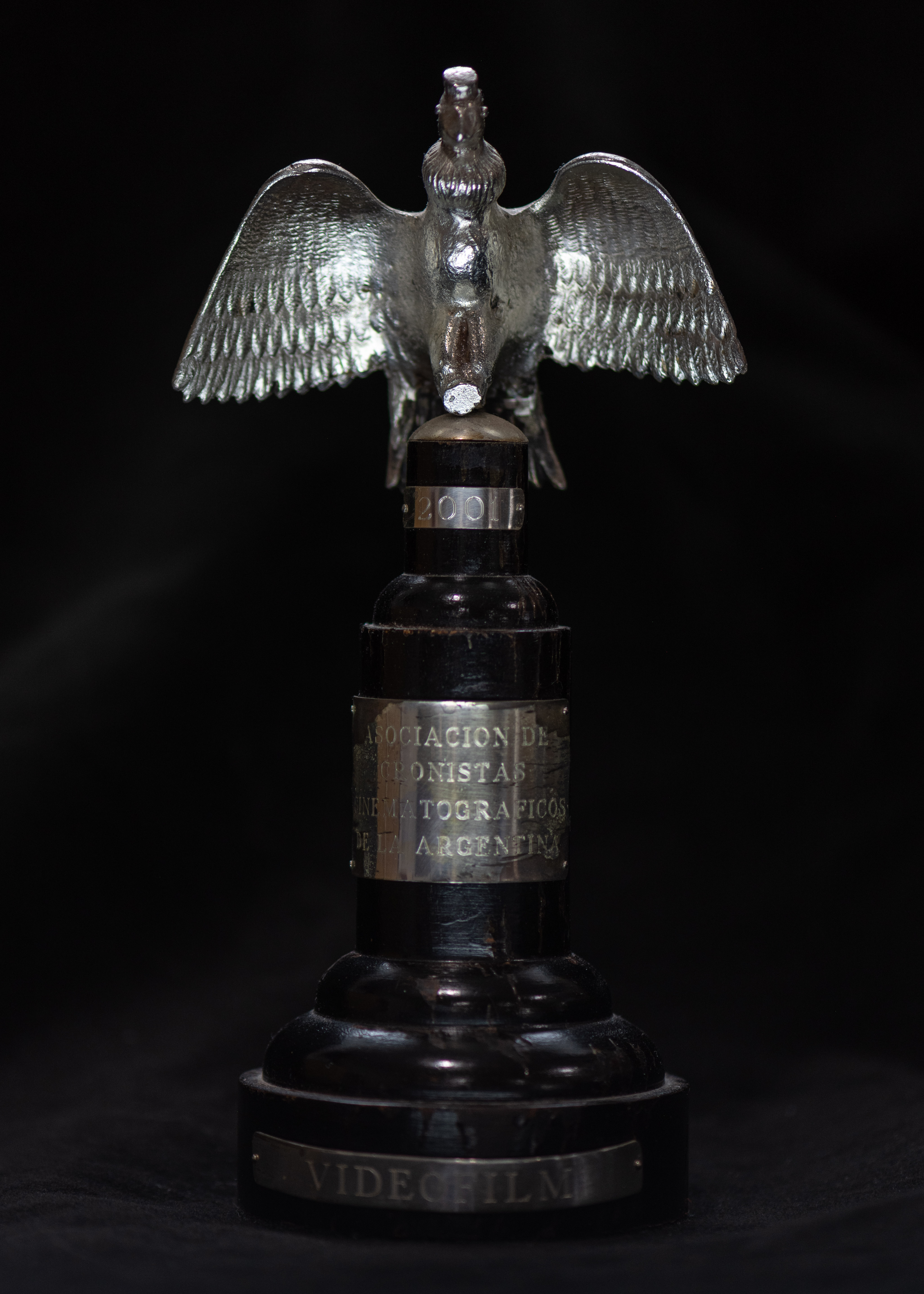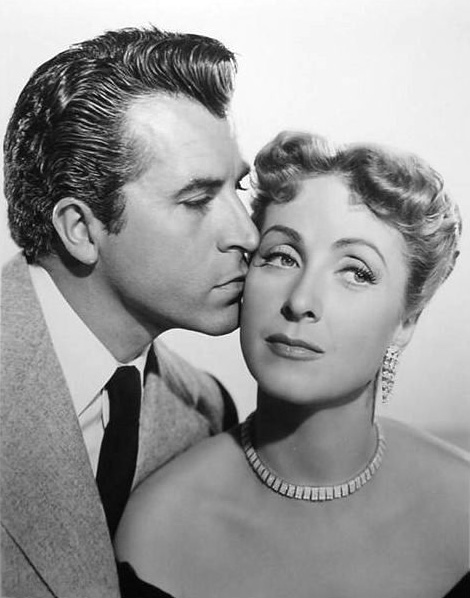|
Stella (1943 Film)
''Stella'' is a 1943 Argentine romantic drama film directed by Benito Perojo and starring Zully Moreno, Florindo Ferrario and Guillermo Battaglia. At the 1944 Argentine Film Critics Association Awards, Gregorio López Naguil won the Silver Condor award for Best Production Design. Cast *Zully Moreno *Florindo Ferrario * Stella Río * Rafael Frontaura *Guillermo Battaglia *Fernando Lamas *María Santos *Mary Parets *Chela Cordero *Carlos Lagrotta Carlos Lagrotta was an Argentine actor. In 1943 he starred in Benito Perojo's '' Stella''. Other films include '' Hay que educar a Niní'' (1940), ''Santa Cándida'' (1945), '' The Headless Woman'' (1947) and '' El muerto es un vivo'' (1953). Sel ... References External links * 1943 films 1940s Spanish-language films Argentine black-and-white films Films directed by Benito Perojo Argentine romantic drama films 1943 romantic drama films 1940s Argentine films {{1940s-Argentina-film-stub ... [...More Info...] [...Related Items...] OR: [Wikipedia] [Google] [Baidu] |
Benito Perojo
Benito Perojo González (Madrid, 14 June 1894 – Madrid, 11 November 1974) was a successful Spanish film director and film producer. Biography Son of José Perojo Figueras (1850–1908), a journalist and politician of Cuban origin, by his wife, Ana Cortina Fuentes (1871–1954). On 18 July 1966 he was honoured by the Caballero Gran Cruz de la Orden del Mérito Civil. He died in Madrid on 11 November 1974 aged 80 and he was survived by his daughter Carmen Perojo Carreras. Selected filmography Director * '' Malvaloca'' (1926) * '' Restless Hearts'' (1928) * '' La bodega'' (1929) * '' The Charm of Seville'' (1931) * '' Fog'' (1932) * '' The Man Who Laughed at Love'' (1933) * '' World Crisis'' (1934) * '' Paloma Fair'' (1935) * '' Bound for Cairo'' (1935) * ''The Barber of Seville'' (1938) *'' Mariquilla Terremoto'' (1938) *'' Suspiros de España'' (1938) *'' La última Falla'' (1940) * '' The Reluctant Hero'' (1941) * ''Goyescas'' (1942) * ''La Casta Susana'' (1944) * '' Se ... [...More Info...] [...Related Items...] OR: [Wikipedia] [Google] [Baidu] |
Silver Condor
The Argentine Film Critics Association ( es, Asociación de Cronistas Cinematográficos de la Argentina) is an organization of Argentine-based journalists and correspondents. The association presents the ''Silver Condor Awards'' (''Premios Cóndor de Plata'') honoring achievements in Argentine cinema. The awards are considered Argentina's equivalent of the Academy Awards. The association was organized on July 10, 1942, and the annual awards have been given since 1943, with breaks in between.IMDb film data base, awards section. The Argentine Film Critics Association is a member of the International Federation of Film Critics, also known as FIPRESCI. Silver Condor The Silver Condor ...[...More Info...] [...Related Items...] OR: [Wikipedia] [Google] [Baidu] |
Argentine Romantic Drama Films
Argentines (mistakenly translated Argentineans in the past; in Spanish ( masculine) or ( feminine)) are people identified with the country of Argentina. This connection may be residential, legal, historical or cultural. For most Argentines, several (or all) of these connections exist and are collectively the source of their being ''Argentine''. Argentina is a multiethnic and multilingual society, home to people of various ethnic, religious, and national origins, with the majority of the population made up of Old World immigrants and their descendants. As a result, Argentines do not equate their nationality with ethnicity, but with citizenship and allegiance to Argentina. Aside from the indigenous population, nearly all Argentines or their ancestors immigrated within the past five centuries. Among countries in the world that have received the most immigrants in modern history, Argentina, with 6.6 million, ranks second to the United States (27 million), and ahead of other imm ... [...More Info...] [...Related Items...] OR: [Wikipedia] [Google] [Baidu] |
Films Directed By Benito Perojo
A film also called a movie, motion picture, moving picture, picture, photoplay or (slang) flick is a work of visual art that simulates experiences and otherwise communicates ideas, stories, perceptions, feelings, beauty, or atmosphere through the use of moving images. These images are generally accompanied by sound and, more rarely, other sensory stimulations. The word "cinema", short for cinematography, is often used to refer to filmmaking and the film industry, and to the art form that is the result of it. Recording and transmission of film The moving images of a film are created by photographing actual scenes with a motion-picture camera, by photographing drawings or miniature models using traditional animation techniques, by means of CGI and computer animation, or by a combination of some or all of these techniques, and other visual effects. Before the introduction of digital production, series of still images were recorded on a strip of chemically sensitiz ... [...More Info...] [...Related Items...] OR: [Wikipedia] [Google] [Baidu] |
Argentine Black-and-white Films
Argentines (mistakenly translated Argentineans in the past; in Spanish (masculine) or ( feminine)) are people identified with the country of Argentina. This connection may be residential, legal, historical or cultural. For most Argentines, several (or all) of these connections exist and are collectively the source of their being ''Argentine''. Argentina is a multiethnic and multilingual society, home to people of various ethnic, religious, and national origins, with the majority of the population made up of Old World immigrants and their descendants. As a result, Argentines do not equate their nationality with ethnicity, but with citizenship and allegiance to Argentina. Aside from the indigenous population, nearly all Argentines or their ancestors immigrated within the past five centuries. Among countries in the world that have received the most immigrants in modern history, Argentina, with 6.6 million, ranks second to the United States (27 million), and ahead of other immig ... [...More Info...] [...Related Items...] OR: [Wikipedia] [Google] [Baidu] |
1940s Spanish-language Films
Year 194 ( CXCIV) was a common year starting on Tuesday (link will display the full calendar) of the Julian calendar. At the time, it was known as the Year of the Consulship of Septimius and Septimius (or, less frequently, year 947 '' Ab urbe condita''). The denomination 194 for this year has been used since the early medieval period, when the Anno Domini calendar era became the prevalent method in Europe for naming years. Events By place Roman Empire * Emperor Septimius Severus and Decimus Clodius Septimius Albinus Caesar become Roman Consuls. * Battle of Issus: Septimius Severus marches with his army (12 legions) to Cilicia, and defeats Pescennius Niger, Roman governor of Syria. Pescennius retreats to Antioch, and is executed by Severus' troops. * Septimius Severus besieges Byzantium (194–196); the city walls suffer extensive damage. Asia * Battle of Yan Province: Warlords Cao Cao and Lü Bu fight for control over Yan Province; the battle lasts for over 1 ... [...More Info...] [...Related Items...] OR: [Wikipedia] [Google] [Baidu] |
1943 Films
The year 1943 in film featured various significant events for the film industry. Top-grossing films (U.S.) The top ten 1943 released films by box office gross in North America are as follows: Events * January 23 – The film ''Casablanca'' is released nationally in the United States and becomes one of the top-grossing pictures of 1943. It goes on to win the Best Picture and Best Director awards at the 16th Academy Awards. * February 20 – American film studio executives agree to allow the United States Office of War Information to censor films. * June 1 – Veteran English stage and screen actor Leslie Howard dies at the age of 50 in the crash of BOAC Flight 777 off the coast of Galicia, Spain. While best remembered for his role as Ashley Wilkes in ''Gone with the Wind'', Howard had roles in many other notable films and was twice nominated for the Academy Award for Best Actor. * November 23 – British Forces Broadcasting Service begins operation * December 31 – New York Ci ... [...More Info...] [...Related Items...] OR: [Wikipedia] [Google] [Baidu] |
Carlos Lagrotta
Carlos Lagrotta was an Argentine actor. In 1943 he starred in Benito Perojo's '' Stella''. Other films include '' Hay que educar a Niní'' (1940), ''Santa Cándida'' (1945), '' The Headless Woman'' (1947) and '' El muerto es un vivo'' (1953). Selected filmography *''Educating Niní'' (1940) * ''By the Light of a Star'' (1941) * ''His Best Student'' (1944) * '' Seven Women'' (1944) * '' Saint Candida'' (1945) * ''The Sin of Julia ''The Sin of Julia'' (Spanish:''El pecado de Julia'') is a 1946 Argentine drama film directed by Mario Soffici and starring Amelia Bence, Aída Luz and Alberto Closas.Oliveri p.84 It is an adaptation of August Strindberg's 1888 play ''Miss Julie'' ...'' (1946) * '' El Muerto es un vivo'' (1953) References External links * Argentine male film actors 20th-century Argentine male actors Year of birth missing Possibly living people {{Argentina-actor-stub ... [...More Info...] [...Related Items...] OR: [Wikipedia] [Google] [Baidu] |
Chela Cordero
Chela Cordero (born Zaira Cordero in Mendoza, 1892 - March 24, 1982 in Buenos Aires) was an Argentine actress. In 1943 she starred in Benito Perojo's ''Stella''. She also appeared in films like ''I Win the War'' (1943), '' El pecado de Julia'' (1946) and '' Edición extra'' (1949). She was married to Luis Sandrini Luis Sandrini (22 February 1905 – 5 July 1980) was a prolific Argentine comic film actor and film producer. Widely considered one of the most respected and most acclaimed Argentine comedians by the public and critics. He has made over 80 appe .... Selected filmography * '' The Sin of Julia'' (1946) References External links * Argentine film actresses 1892 births 1982 deaths People from Mendoza, Argentina {{Argentina-actor-stub ... [...More Info...] [...Related Items...] OR: [Wikipedia] [Google] [Baidu] |
Mary Parets
Mary Parets was an Argentine actress. In 1943 she starred in Benito Perojo's ''Stella''. Other notable films include ''The Boys Didn't Wear Hair Gel Before'' (1937), '' Ambición'' (1939) and ''Los pagares de Mendieta'' (1939). Selected filmography * ''The Boys Didn't Wear Hair Gel Before ''The Boys Didn't Wear Hair Gel Before'' (Spanish:''Los muchachos de antes no usaban gomina'') is a 1937 Argentine historical drama film directed and written by Manuel Romero and starring Florencio Parravicini, Mecha Ortiz and Santiago Arrieta. ...'' (1937) References External links * Possibly living people Argentine film actresses Year of birth missing Place of birth missing 20th-century Argentine actresses {{Argentina-actor-stub ... [...More Info...] [...Related Items...] OR: [Wikipedia] [Google] [Baidu] |
María Santos
María Santos was an Argentine actress. In 1943, she starred in Benito Perojo's '' Stella''. Other notable roles include: ''Maestro Levita'' (1938), '' La fuga'' (1937) and '' La serpiente de cascabel'' (1948). Selected filmography * '' La fuga'' (1937) * ''Melodies of America ''Melodies of America'' (Spanish:''Melodías de América'') is a 1941 Argentinian musical comedy film directed by Eduardo Morera and starring José Mojica, Silvana Roth and June Marlowe.Melgosa p.55 It was intended as an Argentine response to the ...'' (1941) * '' Seven Women'' (1944) * '' Lauracha'' (1946) * '' Story of a Bad Woman'' (1948) * '' The Trap'' (1949) References External links * Argentine film actresses {{Argentina-actor-stub ... [...More Info...] [...Related Items...] OR: [Wikipedia] [Google] [Baidu] |
Fernando Lamas
Fernando Álvaro Lamas y de Santos (January 9, 1915 – October 8, 1982) was an Argentine-American actor and director, and the father of actor Lorenzo Lamas. Biography Argentina Fernando Álvaro Lamas y de Santos was born in Buenos Aires, Argentina. His movies included ''En el último piso'' (1942), ''Frontera Sur'' (1943), ''Villa rica del Espíritu Santo'' (1945), and ''Stella'' (1946). Lamas was also seen in '' The Poor People's Christmas'' (1947), ''The Tango Returns to Paris'' (1948), and '' The Story of a Bad Woman'' (1948). He had the lead in '' La rubia Mireya'' (1949) alongside Mecha Ortiz, and a key role in ''De padre desconocido'' (1949), ''Vidalita'' (1949) and '' The Story of the Tango'' (1950). He also appeared in ''Corrientes, calle de ensueños'' (1949), and ''La otra y yo'' (1950). He was reportedly the third biggest star in the country. His first American film was '' The Avengers'' (1950) for Republic Pictures shot on location in Argentina. Some scenes were ... [...More Info...] [...Related Items...] OR: [Wikipedia] [Google] [Baidu] |





